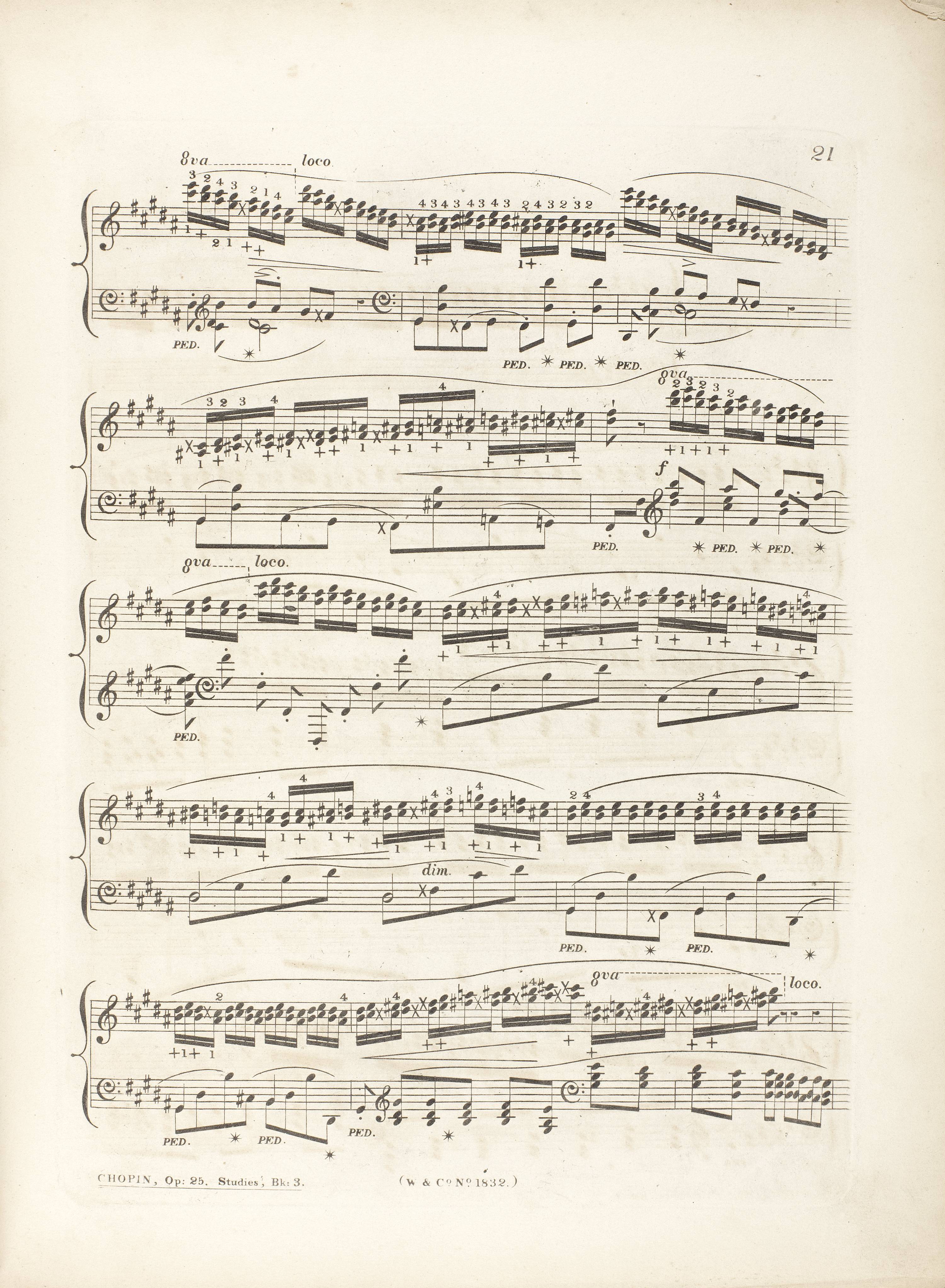



These bars, being an exact repetition of bars 5-6, have no fingering in FC (→GE) and base text to EE (→EE1). It was most probably also the case of the base text to FE, as only at the time of proofreading this edition, Chopin added certain indications. They refer to the exact indications from bars 5-6 and 9-10, resembling less typical situations, related to the arrangement of two neighbouring white keys. Therefore, one can conclude that the composer considered the alternate use of 1-2 fingers (in the bottom voice) and 4-3 (in the top) to be typical for the successions of white and black keys, hence not requiring reminder. The fingering was repeated also in EE2 (→EE3).
Compare the passage in the sources »
category imprint: Differences between sources
issues: EE revisions, Authentic corrections of FE
notation: Fingering



